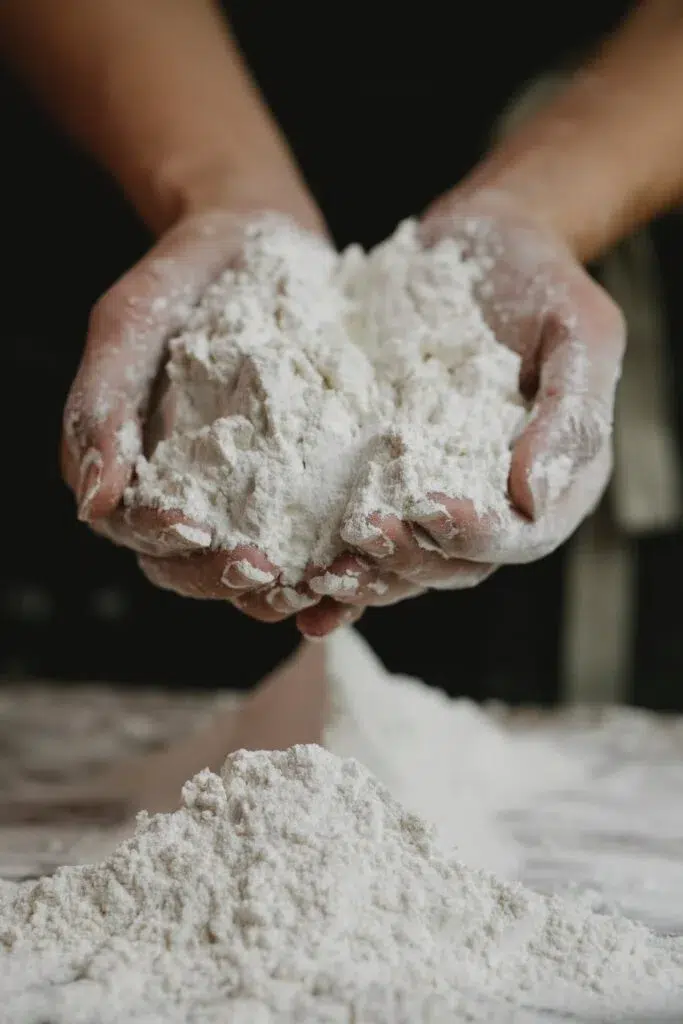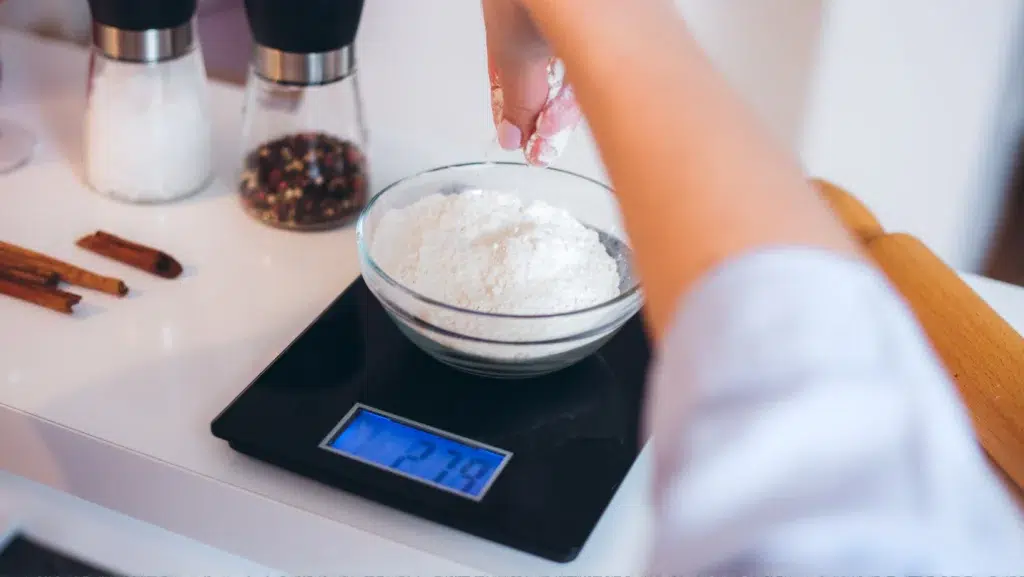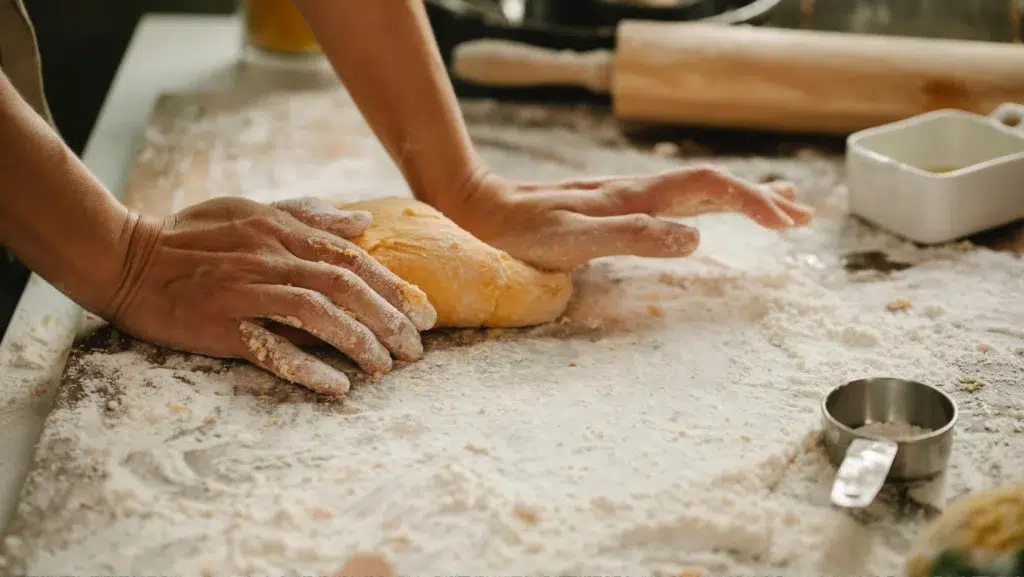Some links on this page are affiliate links. This means we may earn a commission at no additional cost to you if you click through and make a purchase, you can check our Affiliate Disclosure. Thank you for your support!
Choosing the suitable flour varieties is like picking the perfect pair of shoes for a marathon – it sets you up for success, ensuring your breads rise to the occasion, your cakes have that melt-in-the-mouth feel, and your cookies offer just the right amount of crunch or chewiness.
Imagine creating magic in your kitchen every time your oven timer dings. That’s the power of knowing your flour. In this guide, you’ll learn how each type of flour can influence texture, taste, and nutritional value, giving you the confidence to select the best match for your baking ventures. Get ready to uncover the secrets of flour and boost your baking skills to new heights! 🥖 Let’s dive into this essential kitchen wisdom and watch as your treats not only taste better but also truly impress everyone who gets a taste.

Understanding Flour Varieties 🌾
Flour forms the backbone of baking. It’s not just a filler; it’s the building block that gives structure to everything from towering cakes to rustic breads. Let’s get into the nitty-gritty of flour and why it holds such a place of honor in the baking world.
What Is Flour, and Why Does It Matter?
Flour is the finely ground powder from grains, nuts, seeds, or beans. It’s the base for many baked goods and a thickening agent for sauces and soups. But in baking, it does more than bulk up a batter or dough. It’s essential for creating the desired texture and structure in baked goods. The types of flour you use can determine if your cake is airy and soft or if your bread is hearty and dense. It’s the unsung hero that, when chosen correctly, can turn a simple mixture into a sublime creation.
The Anatomy of Grain: Breaking Down Flour Components
When you scoop it, you’re holding a mix of gluten, starch, and other plant components. Gluten, a protein found in wheat flour, gives your dough its elasticity. It traps air bubbles and makes your bread springy and cakes tender. Starch in it works to absorb liquid and contribute to the crumb, the soft inner part of baked goods. Understanding these elements helps you manipulate them to get the perfect rise, the most tender crumb, or the crispiest crust.
Knowing your flour basics is like having a secret recipe; it empowers you to bake confidently and creatively. As we explore further, keep these fundamentals in mind – they’ll help you understand how different flours can change the outcome of your baked treats. 🌾

Wheat Flours: The Backbone of Baking 🍞
Wheat flours are the heavy lifters in the world of baking. They come in several types, each bringing unique properties and specialties to your baking repertoire.
All-Purpose Flour: The Versatile Staple
All-purpose flours live up to its name. It’s the go-to flour for a reason. You can use it in everything from bread to cookies to gravy. It strikes a balance with a moderate protein content, which makes it versatile enough for both sturdy yeast breads and delicate pastries. It’s milled from a mix of hard and soft wheat grains, giving it that just-right texture for various recipes. Think of all-purpose flour as your kitchen’s best friend, always there to help no matter what’s on today’s baking agenda.
Bread Flour: The Strength Builder
Bread flour is the muscle behind chewy bread loaves. It has more protein than all-purpose flour, which leads to more gluten development. It means your dough will rise high, and your bread will have a strong structure and a satisfying chew. It’s ideal for yeasted creations like classic bread loaves, pizza crusts, and bagels. If you’re looking to bake bread that has a professional touch, bread flour is your go-to choice.
Cake Flour: The Tender Touch
For cakes that need to be soft and fluffy, cake flour is the secret. Because of its reduced protein content, less gluten will form when combined. It gives you a cake with a fine, tender crumb that melts in your mouth. It’s perfect for delicate confections like angel food cakes, chiffon cakes, or tender cupcakes. Use cake flour to ensure your sweet creations come out light as air and soft as clouds.
Whole Wheat Flour: The Nutritious Choice
Whole wheat flour brings the whole grain into your baking, bran and all. It’s richer in nutrients than white flour, offering more fiber, vitamins and a deeper, nuttier flavor. Because it contains whole grain, it absorbs more liquid and can make your baked goods denser. To lighten things up, you can mix it with all-purpose flours. It’s great for hearty, healthy breads, muffins, and pancakes. Embrace whole wheat flours to add a wholesome twist to your favorite recipes.
Beyond Wheat: Specialty Flour Varieties for Unique Creations 🌟
Venture beyond wheat, and you’ll find a world of specialty flours that can add new flavors and textures to your baking. These flours aren’t just substitutes; they’re game-changers, each with a unique character to bring to the table.
Rye Flours: Adding Depth to Your Breads
Rye flour, known for its hearty, deep flavor, brings a distinctive earthy touch to breads. It’s less elastic than wheat flour due to its lower gluten content, which results in denser, more flavorful loaves. When mixing rye flour into your dough, consider combining it with bread flour to add some elasticity. Rye’s robust taste is perfect for making a standout pumpernickel or a rustic rye loaf that smells as good as it tastes.
Buckwheat Flours: The Gluten-Free Favorite
Don’t let the name fool you; buckwheat flour is entirely gluten-free. Made from ground buckwheat groats, it has a bold, nutty flavor. It’s a star in gluten-free baking, adding structure and taste to pancakes, noodles, and blinis. Buckwheat flour works well blended with other gluten-free flours to create a balanced texture in your bakes. It’s rich in nutrients and a perfect choice for those looking to add variety to their gluten-free diet.
Spelt Flours: An Ancient Grain for Modern Bakers
Spelt flour comes from an ancient grain that’s regaining popularity in modern kitchens. It’s rich in protein and easy to digest. With a slightly nutty and sweet flavor, Spelt flour can enhance bread, cookies, and pastries with minimal effort. It absorbs more water, so you might need to adjust liquid amounts in your recipes. Mix Spelt flour with all-purpose flour for a lighter texture, or use it alone for a more pronounced taste. It’s a fantastic way to infuse your baking with ancient wholesomeness.

Exploring Gluten-Free Flour Varieties for Health and Flavor 🌿
Diving into gluten-free flour offers various health benefits and exciting new flavors. These flours not only cater to those with gluten sensitivities but also add a twist to traditional baking.
Almond Flour: A Low-Carb Powerhouse
Almond flour has a rich, buttery flavor and is a fantastic way to reduce carbs in your baking. Made from finely ground almonds, it packs a nutritious punch with high protein and healthy fat content. Baking with almond flour may require more eggs or binding agents, as it doesn’t have gluten to hold your creations together. Use it for moist cakes, durable cookies, or a breadcrumb substitute. It’s a simple swap that can boost the nutritional profile of your baked goods significantly.
Coconut Flour: The Tropical Twist in Baking
Coconut flour, with its light coconut aroma and absorbent nature, is a flavorful addition to cakes and cookies. It’s a byproduct of coconut milk production and is high in fiber and protein. Because it’s incredibly absorbent, you’ll need to add more liquid to your recipes when using coconut flour. It works well in no-bake treats and pairs beautifully with chocolate and fruit flavors. Embrace coconut flour to infuse a tropical vibe into your baking.
Oat Flour: The Heart-Healthy Baking Base
Oat flour can make your baked goods friendlier for your heart with its high fiber content. You can easily make your own by grinding rolled oats in a food processor. Oat flour adds a light, nutty flavor to recipes and works well in baked items like pancakes, muffins, and quick breads. It provides a soft crumb and is frequently substituted for some regular flour to boost the nutritional content of your baked goods.
ALSO READ: Unlock The Power Of Fresh Herbs In Your Kitchen Today!
Expert Tips: Selecting and Storing Different Flour Varieties 🛒
Knowing how to choose and store your flour can make a big difference in baking. These expert tips ensure your flour varieties stay fresh and perform well whenever you reach for it.
Shelf Life and Storage Hacks for Maximum Freshness
Flours have a shelf life that you need to consider to maintain their quality. Whole-grain flour, containing more oils from the grain, spoils faster than refined flour. Store your flours in airtight containers to keep them from going rancid and to protect them from moisture and pests. Please keep them in a cool, dark place; your pantry is usually ideal, but you can also refrigerate or freeze flours to extend their freshness. Just bring them back to room temperature before using them for best results.
The Importance of Measuring Flour Correctly

Measuring flour is crucial for the success of your baking. Too much flour can lead to dry, dense cakes, while too little can cause runny batters and flatbreads. Use a knife to level off the flour after spooning it into your measuring cup for an exact measurement. Resist the temptation to scoop directly from the bag, as this can compress the flour and result in up to 30% more than your recipe requires. For the most consistent results, weigh your flour with a kitchen scale. It avoids the guesswork and ensures you use the exact amount you need.
ALSO READ: The Ultimate Guide To Enhancing Your Recipes With Dried Herbs
Ready, Set, Bake: Applying Your Flour Knowledge 🍰
Putting your knowledge into practice can transform your baking from good to great. Here’s how to adapt recipes and get creative with flour for the best baking experience:
Recipe Adjustments When Switching Flours
Substituting one type of flour for another can be a game-changer for a recipe. Start by understanding the properties of the flour you want to use. High-protein flours need more liquid, while low-protein flours absorb less. Use less dense flour like coconut flour, or more lighter flour varieties like cake flour. Always sift your flour before mixing it evenly, and introduce air for lighter textures. When trying a new flour varieties, substitute only a tiny portion and adjust from there to avoid drastically changing the recipe’s integrity.
Experimenting with Flour Varieties Blends for Customized Baking
Creating your own flour varieties blends can open up a world of textures and flavors. Mix strong bread flour with all-purpose flour for chewier cookies, or blend oat and almond flour for a nutritious and flavorful twist on pancakes. Tailor the proportions to suit the type of bake you’re aiming for – heavier for bread, lighter for cakes. Remember to write down what works so you can recreate your successes. Trial and error are your friends here; each blend brings you closer to your perfect bake.
ALSO READ: Revealing The Magic Of Eggs In Worldwide Cuisine
Conclusion: Your Path to Becoming a Flour Expert and Baking Maestro 🏆

You now have the scoop on a wide array of it, from the trusty all-purpose to the hearty whole wheat to the robust rye to the gluten-free favorites like almond and coconut. You’ve also learned to store and measure them for peak freshness and precision.
Take this knowledge and let it inspire you in the kitchen. Test different flour varieties in your favorite recipes, see how blends can enhance your bakes, and don’t avoid trial and error. Every batch you bake is a step toward mastering the art of flour. Remember, one loaf, cake, or pie at a time creates talented bakers; they are not born.
Happy baking, and may your hands always be covered in flour varieties as you craft delicious memories!
ALSO READ: Unlock The Delights Of Cheeses: A Gourmet’s Guide To The Finest Varieties
5 FAQs About Flour
What distinguishes unbleached flour varieties from bleached flour?
Bleached flour is a finer-grain flour with a softer texture that has undergone a chemical process to accelerate aging. Unbleached flour varieties ages naturally and tends to be less processed, with a denser grain and a slightly off-white color.
Is it possible to substitute bread flour for all-purpose flour?
Yes, you can get a chewier texture by substituting bread flour for all-purpose flour. It works particularly well for dough for pizza and bread. However, because bread flour has a higher protein content, it may make cakes and pastries more challenging if you adjust the recipe accordingly.
How do I make my baked goods gluten-free? To make your baked goods gluten-free, use gluten-free flour like rice, almond, or buckwheat flour. Remember to check for cross-contamination if you’re baking for someone with celiac disease, and consider xanthan gum or psyllium husk to improve the texture.
Why is my whole wheat bread so dense? Whole wheat bread can be denser because it is heavier and has less gluten than white flour, making the dough less elastic. To lighten the texture, try mixing whole wheat flour with all-purpose flour or adding vital wheat gluten to improve the dough’s elasticity.
How long can I store it, and how do I know if it’s gone wrong? Most of it lasts up to six months at room temperature or can be extended up to a year if stored in the fridge or freezer. You’ll know flour has gone wrong if it has a sour smell, changes color, or shows signs of bugs or mold. Always store it in an airtight container to keep it fresh longer.

